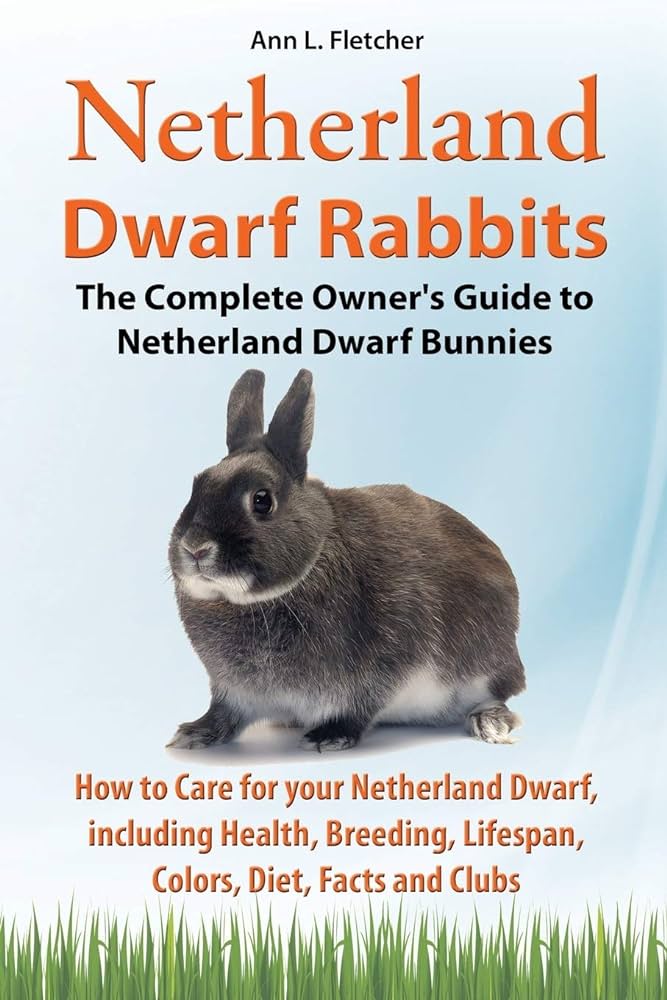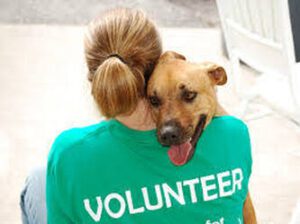Key Takeaways
-
Netherland Dwarf rabbits require a safe indoor habitat with plenty of space to play and explore.
-
A balanced diet for these small bunnies includes unlimited hay, fresh vegetables, and a small number of pellets.
-
Regular grooming, including weekly brushing and periodic nail trimming, is essential for maintaining their health.
-
Exercise and mental stimulation through play are critical for a happy and healthy Netherland Dwarf rabbit.
-
Understanding and responding to your rabbit’s unique behaviors and needs will help you build a strong bond.
Welcome to the World of Netherland Dwarf Rabbits
Imagine a tiny bundle of joy with soft fur and big, expressive eyes—that’s a Netherland Dwarf rabbit for you. These adorable pets are not just cute; they are full of personality and can bring immense joy to your home. But, as with any pet, they come with their own set of care requirements that are crucial for their well-being.

“Netherland Dwarf Rabbits, The Complete …” from www.amazon.com and used with no modifications.
Understanding Your Petite Companion
Netherland Dwarf rabbits are one of the smallest rabbit breeds, typically weighing in at around 2 to 2.5 pounds. Because of their small stature, they require careful handling to prevent injuries. They are known for their playful and affectionate nature, but also for being a bit skittish, which means they need a calm and patient owner.
The Joys of Netherland Dwarf Rabbit Ownership
Having a Netherland Dwarf rabbit as a pet is a unique experience. They are intelligent, can learn tricks, and are known to form strong bonds with their owners. With proper care, these rabbits can live up to 10-12 years, making them long-term companions. Their compact size makes them ideal for those with limited space, and their minimal grooming needs are a bonus for busy pet parents.
Setting Up a Safe Haven
Before you bring your Netherland Dwarf rabbit home, you’ll need to create a safe space where they can feel secure and comfortable. This starts with choosing the right habitat and ensuring it is equipped with all the essentials your rabbit needs to thrive.
Choosing the Right Habitat
Despite their small size, Netherland Dwarf rabbits need plenty of room to hop, stretch, and play. A spacious indoor cage or pen is ideal, with a minimum size of 4 feet by 2 feet, but larger is always better. Make sure the habitat has a solid floor to protect your rabbit’s delicate feet, and provide a soft bedding material, such as paper-based bedding, to absorb moisture.
Essential Accessories for Comfort and Play
Your rabbit’s habitat should be a haven of comfort and stimulation. Here’s what you’ll need to make it just right: including ensuring you have appropriate toys for indoor stimulation.
-
Hiding Places: Rabbits need a place to retreat and feel safe. Include a hideout, such as a wooden box or a small pet house, in their habitat.
-
Feeding Station: Equip the habitat with a hay feeder and a water bottle or bowl. A heavy ceramic bowl is best for food to prevent tipping.
-
Chew Toys: To keep their teeth healthy and to prevent boredom, provide a variety of chew toys made from safe, untreated wood or other rabbit-safe materials.
-
Litter Box: Yes, Netherland Dwarf rabbits can be litter box trained! Place a litter box in a corner of the habitat and fill it with paper-based or wood pellet litter.
Mastering the Art of Grooming
Grooming is more than just keeping your Netherland Dwarf rabbit looking its best; it’s about maintaining good health. Neglecting this duty can lead to uncomfortable matting, skin infections, or worse, digestive issues from ingesting too much hair. Fortunately, grooming your petite pal is not a herculean task and can be a great way to bond.
Remember, grooming is a hands-on experience that your rabbit will grow to enjoy with time and patience. It’s a process that teaches you about their body condition and health, so stay observant and gentle as you groom.
Brushing and Coat Care Essentials
The coat of a Netherland Dwarf rabbit is short and requires less maintenance than long-haired breeds. However, regular brushing is still essential, especially during molting periods when they shed their old coat. Weekly brushing with a soft-bristled brush can keep their coat sleek and reduce the amount of hair they ingest during self-grooming.
During molting, which can happen a few times a year, you may need to brush your rabbit more frequently. This helps prevent hairballs and keeps their coat from getting tangled. A rubber grooming glove can be particularly effective during these times, as it gently removes loose fur while providing a comforting massage.
If you notice any mats forming, address them immediately. Gently tease them apart with your fingers or carefully use a comb designed for small pets. If the matting is severe, it’s best to seek the help of a professional groomer or your vet to avoid injuring your rabbit.
Nail Trimming: A Step-By-Step Guide
Long nails can cause discomfort and even lead to health problems for your Netherland Dwarf rabbit. To prevent this, you should trim their nails every 4-6 weeks. If you can hear their nails clicking on the floor, it’s time for a trim.
For the task, you’ll need a pair of good-quality nail clippers designed for small animals. It’s also wise to have some styptic powder on hand in case you accidentally clip too close to the quick, which can cause bleeding.
-
Start by getting your rabbit into a comfortable and secure position. You can place them on your lap or a table at a comfortable height.
-
Gently take one of your rabbit’s paws and identify the quick, the pinkish part inside the nail where blood vessels and nerves are. You want to avoid cutting into this.
-
Cut the nail a few millimeters away from the quick. If your rabbit’s nails are dark and you can’t see the quick, just trim the tips to be safe.
-
If you do accidentally cut the quick, apply some styptic powder to stop the bleeding.
-
Always praise your rabbit and offer a treat after trimming to make it a positive experience.
Regular nail trimming is essential, but if you’re unsure or uncomfortable doing it yourself, seek assistance from your vet or a professional groomer.
Exercise and Play: Key to a Happy Rabbit
Exercise is crucial for your Netherland Dwarf rabbit’s physical and mental well-being. These energetic little creatures need space to run, jump, and play. Without regular exercise, they can become bored, which can lead to destructive behavior and health issues like obesity. Learn more about bunny bonding and the importance of play for your rabbit’s happiness.
Ensure your rabbit has at least a few hours each day to explore and exercise outside of their habitat. This can be indoors in a rabbit-proofed area or outdoors under close supervision to protect them from predators.
Creating a Bunny-Proof Play Area
To create a safe play area for your Netherland Dwarf, you’ll need to bunny-proof the space. This means:
-
Covering electrical cords or moving them out of reach to prevent chewing.
-
Removing toxic plants and small objects that could be ingested.
-
Securing furniture or spaces where your rabbit could get stuck or hide.
Bunny-proofing not only protects your rabbit but also saves your belongings from becoming chew toys. Keep an eye on your rabbit during playtime to ensure their safety and to enjoy watching their antics.
Interactive Toys and Activities
Toys are not just for fun; they are essential for your Netherland Dwarf rabbit’s health. They provide mental stimulation, encourage physical activity, and help keep their teeth in good shape. Offer a variety of toys, including:
-
Tunnels for exploration
-
Chew toys made of untreated wood, sisal, or cardboard
-
Balls they can push or toss with their nose
-
Puzzle toys that reward them with treats
Switching toys regularly can keep things interesting for your rabbit. You can even make homemade toys, like a cardboard box filled with shredded paper for digging. The key is to provide opportunities for your rabbit to play and explore, keeping them happy and healthy.
Health Check-Ups and Common Ailments
Regular health check-ups are a must for your Netherland Dwarf rabbit. These not only ensure that your rabbit is in good health but also allow for early detection and treatment of potential issues. A yearly check-up with a veterinarian experienced in small animals is recommended.
At home, keep an eye out for changes in eating habits, behavior, or litter box use, as these can be signs of health problems. It’s also important to check your rabbit’s teeth regularly, as overgrown teeth can cause pain and feeding difficulties.
When to Visit the Vet
There are times when a visit to the vet is necessary. If you notice any of the following, it’s time to seek professional advice:
-
Changes in appetite or water consumption
-
Unusual stool, either too small, large, or runny
-
Sneezing, discharge from the nose or eyes, or difficulty breathing
-
A head tilt, which can indicate an ear infection or neurological issue
-
Any lumps, bumps, or wounds on the skin
Keeping a close relationship with your vet ensures that you’re providing the best care for your rabbit and that you’re prepared to act quickly if health issues arise.
Signs of Illness in Your Netherland Dwarf
As a responsible pet owner, it’s crucial to recognize the signs of illness in your rabbit. Here are some common symptoms to watch for:
-
Lethargy or decreased activity levels
-
Difficulty eating or drooling
-
Weight loss or gain
-
Changes in grooming habits
-
Aggression or changes in personality
If you notice any of these signs, don’t wait. Contact your vet immediately, as rabbits can decline rapidly when ill. Early intervention is key to a successful recovery.
Building a Bond with Your Netherland Dwarf
Building a bond with your Netherland Dwarf rabbit is one of the most rewarding aspects of pet ownership. These creatures are capable of deep affection and can become very attached to their human companions. Bonding with your rabbit takes time, patience, and understanding of their unique language and needs.
Approaching and Handling Your Rabbit with Care
When you first bring your Netherland Dwarf rabbit home, give them time to acclimate to their new environment. Approach them calmly and speak softly to avoid startling them. When handling your rabbit, always support their back and hindquarters to prevent injury. It’s essential to build trust gradually, allowing your rabbit to come to you on their terms.
Communication and Trust: Understanding Your Rabbit’s Language
Rabbits communicate through body language, and learning to interpret their signals is key to understanding their emotions and needs. A relaxed rabbit may lie down with their legs stretched out, while a rabbit standing on their hind legs may be curious about their surroundings. Paying attention to these cues will help you respond appropriately and strengthen your bond.
FAQs
Example: “When I first adopted my Netherland Dwarf rabbit, she was very shy. It took weeks of gentle interaction and patience, but now she eagerly hops over for cuddles and treats. Understanding her body language was crucial in building that trust.”
Now, let’s answer some common questions that rabbit owners may have.
How long do Netherland Dwarf rabbits typically live?
With proper care, Netherland Dwarf rabbits can live for 10 to 12 years. This lifespan is a commitment, so make sure you’re ready to care for your rabbit over the long term. Regular veterinary care, a proper diet, and a safe living environment all contribute to a longer, healthier life for your rabbit.
Can Netherland Dwarf rabbits be litter box trained?
Yes, Netherland Dwarf rabbits can be litter box trained with consistency and patience. Place a litter box in their habitat and observe where they prefer to do their business. Put some of their droppings into the litter box to encourage them to use it, and reward them with a treat when they do.
Are Netherland Dwarf rabbits suitable pets for children?
Netherland Dwarf rabbits can be suitable for families with older children who understand the need for gentle handling. Because these rabbits are small and can be easily injured, they’re not recommended for households with very young children.
Children should always be supervised when interacting with the rabbit to ensure the safety of both the child and the animal.
How often should I groom my Netherland Dwarf rabbit?
You should groom your Netherland Dwarf rabbit at least once a week to keep their coat in good condition. During shedding seasons, you may need to groom them more frequently to prevent hairballs and mats. For more detailed guidance, check out our tips on small pet grooming.
What are some signs of stress or illness in Netherland Dwarf rabbits?
Signs of stress or illness in Netherland Dwarf rabbits include changes in appetite or bathroom habits, lethargy, aggression, or a change in grooming habits. If you notice any of these signs, contact your veterinarian as soon as possible.
Example: “I noticed my Netherland Dwarf rabbit was not eating as much and seemed less active. After a visit to the vet, we discovered he had dental issues that needed treatment. It’s so important to act quickly if you notice any changes in your rabbit’s behavior.”


